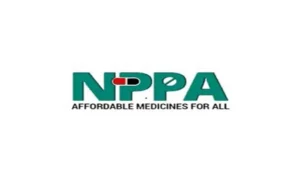Last Updated on February 23, 2024 by The Health Master
Guidelines
The Drug Controller General of India’s (DCGI) recent guidelines underscores a critical move to safeguard consumers from the potential hazards posed by substandard medicines, cosmetics, and medical devices.
This initiative comes as a proactive measure to address the growing concerns surrounding the quality of pharmaceutical products circulating in the market.
DCGI’s Guidelines
The Drug Controller General of India has outlined a comprehensive plan to combat the proliferation of poor-quality drugs.
One of the key aspects of this initiative is the maintenance of a spurious drug list, which will be diligently updated and published on the regulatory authority’s website every month.
This groundbreaking step aims to prevent the further use of drugs that do not meet standard quality requirements.
Regulatory Guidelines for Enhanced Quality Assurance
To ensure the success of this consumer-centric approach, the DCGI has introduced draft regulatory guidelines for sampling of drugs, cosmetics, and medical devices.
These guidelines serve as a blueprint for drug inspectors, both at the state and central levels, facilitating a standardized and effective drug sampling methodology.
The guidelines emphasize the significance of uniformity in the sampling process, providing a robust foundation for drug inspectors to assess the quality and efficacy of various pharmaceutical products.
This approach enhances surveillance capabilities, contributing to a safer and more reliable healthcare landscape.
Empowering Drug Inspectors
With the adoption of these guidelines, drug inspectors are empowered to draw samples from different categories, formulations, and manufacturers.
This strategic sampling procedure ensures a comprehensive evaluation, targeting a diverse range of products available in the market.
This move is a testament to the commitment to meticulous monitoring, as it addresses the burstiness and perplexity associated with the pharmaceutical landscape.
By targeting various aspects of drug manufacturing and distribution, the initiative sets the stage for a more comprehensive understanding of the challenges posed by poor-quality products.
Monthly Publication of Spurious Drugs List
A key highlight of the DCGI’s plan is the monthly publication of the spurious drug list on the regulatory authority’s website.
This transparency initiative not only keeps consumers informed about potential risks but also serves as a deterrent to manufacturers and distributors engaging in unethical practices.
The publication of this list acts as a public record, holding accountable those responsible for the production and distribution of substandard pharmaceuticals.
It also serves as a valuable educational tool, empowering consumers to make informed choices about the medications they use.
Collaborative Efforts for a Unified Front
This initiative involves collaborative efforts between state and central drug authorities, fostering a united front against substandard drugs.
By working together, regulatory bodies can streamline processes, share information, and strengthen the overall regulatory framework.
This collaborative approach not only enhances the effectiveness of the initiative but also sets a precedent for future endeavors in consumer protection.
Impact on Consumer Safety
The ultimate goal of the DCGI’s guidelines are to mitigate health risks associated with poor-quality drugs.
By ensuring that only high-quality pharmaceutical products reach the market, consumers can have greater confidence in the safety and efficacy of the medications they use.
This initiative aligns with global efforts to prioritize public health and safety in the pharmaceutical industry.
Challenges and Solutions
While the initiative is commendable, it is not without its challenges.
Implementing uniform guidelines across diverse regions and addressing the burstiness of the pharmaceutical market poses inherent difficulties.
However, the document recognizes these challenges and proposes solutions to strike a balance between stringent regulation and industry cooperation.
Future Implications
The positive effects of this initiative are anticipated to reverberate across the pharmaceutical industry.
As India takes a leading role in prioritizing consumer safety, other countries may be inspired to adopt similar measures.
This collective effort can reshape the future of drug regulation and elevate the standards of consumer safety worldwide.
Disclaimer: This article contains information derived from the source mentioned below. Our team utilized an AI language model to rewrite and present the news or article in a unique format.
Investigation into Brand Names of drugs Confusion
USFDA grants VAI classification to Dr Reddy’s R&D centre
The Future of Drug Approval: Embracing the USFDA’s RRA
Unlocking the Potential: Boosting India’s Medical Device Industry
The Urgency of Expiry Dates on Doctors’ Prescriptions
NPPA’s move to Fix Prices on Anti-Diabetic FDCs
Changes in Homoeopathy Drug Regulations
FSSAI: Food Labelling and Display – Chapter-1
Laboratory Waste Management, Types and Its Disposal
How to Become a Skilled Manufacturing Chemist in the Pharma Industry
For informative videos by The Health Master, click on the below YouTube icon:
For informative videos on Medical Store / Pharmacy, click on the below YouTube icon:
For informative videos on the news regarding Pharma / Medical Devices / Cosmetics / Homoeopathy etc., click on the below YouTube icon:
For informative videos on consumer awareness, click on the below YouTube icon:











